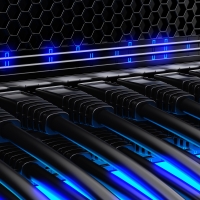- “문화 우선 접근이 성공의 비결” 에이버리 데니슨의 AI 혁신 전략
- “여러 AI 모델을 로컬에서 테스트 가능”···구글, 오픈소스 앱 ‘AI 엣지 갤러리’ 공개
- Why I recommend this OnePlus phone over the S25 Ultra - especially at this new low price
- I replaced my laptop with Microsoft's 12-inch Surface Pro for weeks - here's my buying advice now
- This palm recognition smart lock doubles as a video doorbell (and has no monthly fees)
General Boot from iSCSI SAN Recommendations
General Boot from iSCSI SAN Recommendations
If you plan to set up and use an iSCSI LUN as the boot device for your host, you need to follow certain general guidelines.
The following guidelines apply to booting from independent hardware iSCSI and iBFT.
■
Review any vendor recommendations for the hardware you use in your boot configuration.
■
For installation prerequisites and requirements, review vSphere Installation and Setup.
■
Use static IP addresses to reduce the chances of DHCP conflicts.
■
Use different LUNs for VMFS datastores and boot partitions.
■
Configure proper ACLs on your storage system.
■
The boot LUN should be visible only to the host that uses the LUN. No other host on the SAN should be permitted to see that boot LUN.
■
If a LUN is used for a VMFS datastore, it can be shared by multiple hosts. ACLs on the storage systems can allow you to do this.
■
Configure a diagnostic partition.
■
With independent hardware iSCSI only, you can place the diagnostic partition on the boot LUN. If you configure the diagnostic partition in the boot LUN, this LUN cannot be shared across multiple hosts. If a separate LUN is used for the diagnostic partition, it can be shared by multiple hosts.
■
If you boot from SAN using iBFT, you cannot set up a diagnostic partition on a SAN LUN. To collect your host’s diagnostic information, use the vSphere ESXi Dump Collector on a remote server. For information about the ESXi Dump Collector, see vSphere Installation and Setup and vSphere Networking.

